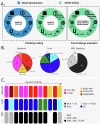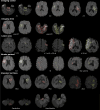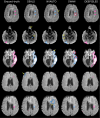DeepISLES: a clinically validated ischemic stroke segmentation model from the ISLES'22 challenge
- PMID: 40783484
- PMCID: PMC12335569
- DOI: 10.1038/s41467-025-62373-x
DeepISLES: a clinically validated ischemic stroke segmentation model from the ISLES'22 challenge
Abstract
Diffusion-weighted MRI is critical for diagnosing and managing ischemic stroke, but variability in images and disease presentation limits the generalizability of AI algorithms. We present DeepISLES, a robust ensemble algorithm developed from top submissions to the 2022 Ischemic Stroke Lesion Segmentation challenge we organized. By combining the strengths of best-performing methods from leading research groups, DeepISLES achieves superior accuracy in detecting and segmenting ischemic lesions, generalizing well across diverse axes. Validation on a large external dataset (N = 1685) confirms its robustness, outperforming previous state-of-the-art models by 7.4% in Dice score and 12.6% in F1 score. It also excels at extracting clinical biomarkers and correlates strongly with clinical stroke scores, closely matching expert performance. Neuroradiologists prefer DeepISLES' segmentations over manual annotations in a Turing-like test. Our work demonstrates DeepISLES' clinical relevance and highlights the value of biomedical challenges in developing real-world, generalizable AI tools. DeepISLES is freely available at https://github.com/ezequieldlrosa/DeepIsles .
© 2025. The Author(s).
Conflict of interest statement
Competing interests: E.dl.R. (D.R., V.A., D.M.S., A.B.) was (are) employed by Icometrix. H.A. received compensation as a speaker from Bayer A.G. C.K. has financial interests in OPTICHO, which, however, did not support this work. The remaining authors declare no competing interests.
Figures






References
MeSH terms
LinkOut - more resources
Full Text Sources
Medical

